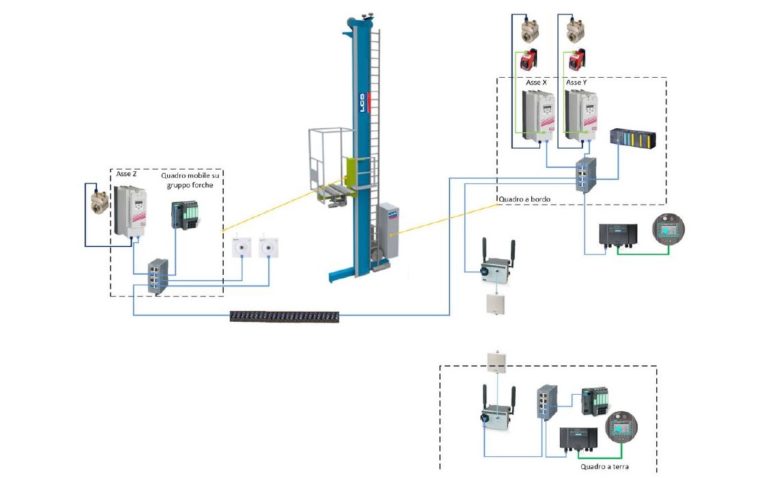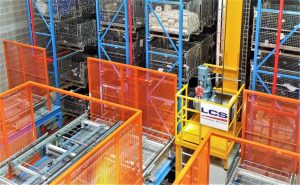The term “refurbishment” is commonly used to refer to the renewal of machines or parts of machines. It involves demanding work on plant, mechanical parts and structures, and sometimes the introduction of new automatisms and modern electronic control systems.In other words, refurbishment is the complex of operations that allows a machine tool or plant, such as an automatic warehouse, to relive, as far as possible, a second “technical youth”, extending its operating life by years.
WHEN IS THE RIGHT TIME FOR REFURBISHMENT?
Sometimes it is necessary to carry out modernisation:
- Decrease in system availability (on average after 10 years)
- Spare parts not available
- Unavailability of the original manufacturer/interlocutor
- Regulatory adaptation (Legislative Decree 81/2008 and 2006/42/EC)
- Updating security systems
- Sometimes it is appropriate and strategic to plan technological renewal interventions:
Need to change existing features
- Adding new features
- Improvement of current performance
- Upgrade without loss of production
Moreover, there are different cases, which can be classified in 3 macro-categories that guide the intervention methodology: Electrical ± Mechanical, HW ± SW PLC and HW ± SW ± WCS ± WMS. Therefore, it is fundamental to carry out a careful analysis of the current situation and to define with method the type of intervention and the relative timing.
THE EVOLUTION OF AN EXISTING WAREHOUSE TO MEET NEW MARKET DEMANDS AND FUTURE CHALLENGES
The need to carry out refurbishment interventions is very often driven by market changes and the birth of new trends affecting the industry, requiring a prompt adjustment.
In the intralogistics field the drivers of innovation are:
- Reduced “Time to market”
- Digitization and e-commerce
- Ergonomics and safety
- Controlled system degradation
- Integrated and contextualized systems with respect to the business model
Therefore, there is a growing need for new solutions that guarantee efficiency, maximum response speed, adaptability to widely varying sales volumes and emergency configurations in case of failure.
THE CASE STUDY: FROM MODERNIZATION TO EXPANSION TO ENSURE HIGH CUSTOMER SATISFACTION
The wool business of the Barberis Canonico family began in 1663 in Pratrivero, in the province of Biella, from where it never moved, building generation after generation one of the world’s leading manufacturers of high-end fabrics. In 2017 the wool factory produced over 10 million metres of fabric with over 3,000 variants. In addition, customers order pieces of fabric for tailoring production almost just-in-time and the supply must be timely.
Vitale Barberis Canonico, constantly striving to improve its services to its customers, has therefore started with LCS the analysis for the improvement and structural modification of the automatic yarn warehouse.
The refurbishment of the automatic warehouse carried out by LCS has regenerated all the stacker cranes, which presented mechanical, positioning, low performance and spare parts availability problems.

Afterwards, LCS took care of the expansion of the intensive yarn warehouse consisting of 3 stacker cranes with 3,024 pallet slots and operated the complete refurbishment of the internal and external conveyors:
- Expansion of storage capacity with plant housed in a new building with the addition of 2 stacker cranes to 4 new shelving fronts for a total of 2,106 pallet slots
- Complete refurbishment of the internal and external conveyors for a drastic increase in the performance of the LU extraction circuits with replacement of the warehouse front area at the weaving and warping levels, insertion of a recirculation ring and a new picking carousels, plus a double shuttle capable of handling all the 5 stacker cranes
 Finally, LCS intervened on LogiWare, LCS’ proprietary software for automatic warehouse management, in order to enable it to manage the new handling functions. The entire area was then prepared for future expansion.
Finally, LCS intervened on LogiWare, LCS’ proprietary software for automatic warehouse management, in order to enable it to manage the new handling functions. The entire area was then prepared for future expansion.
The technological refurbishment of the warehouse has led to greater control over the product as well as to greater safety for operators according to the best current standards. The redefinition of flows has solved the congestion in the goods handling areas and has made the flow in the VBC warehouse consistent with the extreme service requirements of the international customers of the wool manufacturer.
Thanks to the deep refurbishment, the warehouse has evolved and now expresses greater productivity, effectiveness and efficiency, fundamental elements to meet the increasingly challenging needs of customers, shaped by emerging market trends.
Follow us: LCS Group
Tel: +39 039 6755901
E-mail: info@lcsgroup.it


